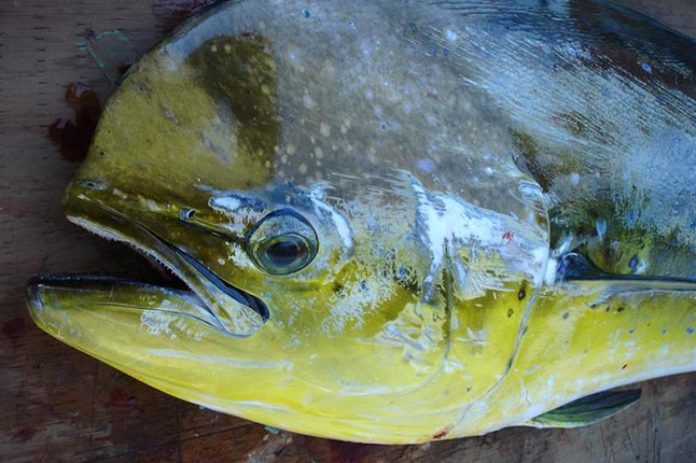Also known as mahi mahi or dolphinfish, the average dorado is a meter-long package of muscle and puts up a hard fight once hooked, making it a prized trophy catch for sport fishers.
Foodies and restaurateurs love its sweet, mild meat — easily available and firm enough for a wide range of recipes. The sought-after fish is often present year-round in the Mexican Pacific. It matures quickly and spawns prolifically, producing millions of eggs a year.

For those and other reasons, dorado is an “excellent candidate” for commercial fishing, according to fishery biologist Dr. Fernando Márquez-Farías of the Sinaloa Autonomous University (UAS).
In fact, the United States and half a dozen Central and South American countries already have commercial dorado fisheries, mostly on the Pacific coast, where dorado are more common.
But for the time being, most dorado fishing in Mexico exists in legal gray areas, making it a prime example of what is known as IUU fishing — an acronym that stands for illegal, unreported and unregulated.
IUU fishing is “one of the greatest threats to marine ecosystems due to its potent ability to undermine national and regional efforts to manage fisheries sustainably” and “can lead to the collapse of local fisheries, with small-scale fisheries in developing countries proving particularly vulnerable,” according to the Food and Agriculture Organization (FAO) of the United Nations.
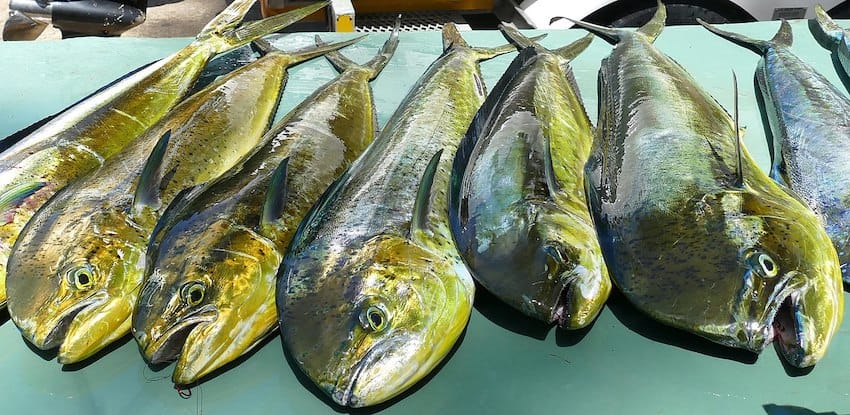
Under Mexican law, dorado is technically reserved for sport fishing. But it can also be caught as bycatch in fishing operations that aim for other species. This opens a loophole the size of Baja California itself. A patchwork of laws establishes the percentage of bycatch allowed for different locations and for different species.
Industrial fleets targeting fish like tuna and sardines are expected to report the number and weight of dorado bycatch to Conapesca, the Mexican government agency that regulates fishing. But there’s little oversight, and experts interviewed for this article agreed that industrial bycatch is likely massively underreported.
For small fishers, dorado can offer economic stability when other species are out of season. One Mazatlán fisher said that dorado fishing was allowed under his general commercial fishing permit.
But he and another fisher in Escuinapa, Sinaloa, both said that when fishing dorado, they avoided government patrol boats or threw the fish overboard as a last resort. Both spoke on condition of anonymity.
So how much dorado is fished in Mexico? Industrial bycatch reports may not be reliable, and small fishers certainly aren’t telling the government how much fish they catch illegally. Without reliable numbers, it’s difficult for scientists and regulatory authorities to know if dorado populations are thriving or struggling.
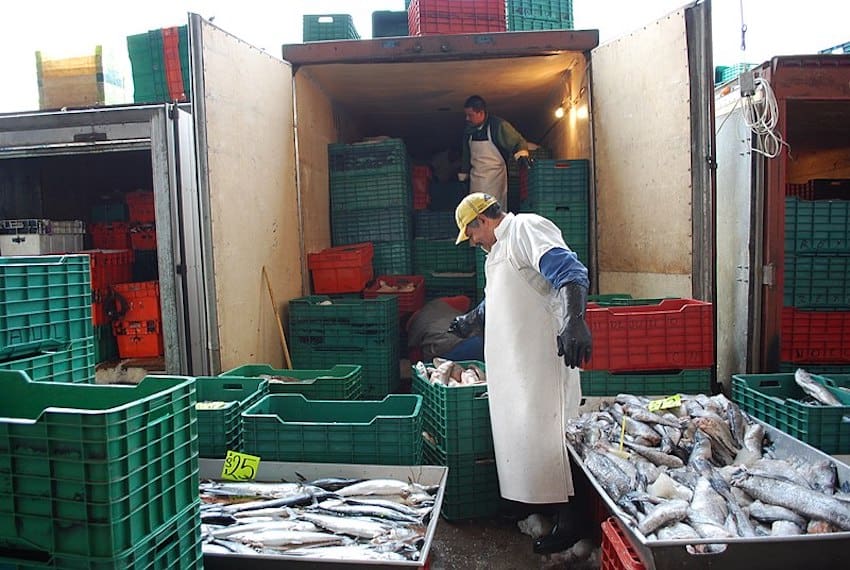
Gllen Bercovich is a sport fishing captain in Baja California Sur, the president of the Los Cabos Union of Sport Fishing Vessel Owners. He’s advocated for keeping dorado fishing limited to sport fishers. He said that he has seen a noticeable decline in dorado in his area.
“It’s been months without dorado,” he said. “In the past, it was [available] all year round. … It’s a little less in some months because the water gets a little colder, but we are realizing how the flow of dorado in this area is decreasing,”
Another of Sinaloa’s dorado fishers agreed there had been less dorado in recent years, though he felt they are still abundant.
“When we go to fish, we see a lot in the sea, ”he said. “… You can see [them] all over the place, jumping and eating.”
If the population is down, even a bit, it could be the standard ebb and flow of nature. Or it could be a sign that dorado, despite being a productive and fast-growing species, are starting to feel the pressure of illegal fishing, changing climate or other factors.
Figuring out what’s really going on is crucial to balancing the needs of small independent fishers, the bottom line of industrial fishing companies and the reality that there aren’t infinite fish in the sea.
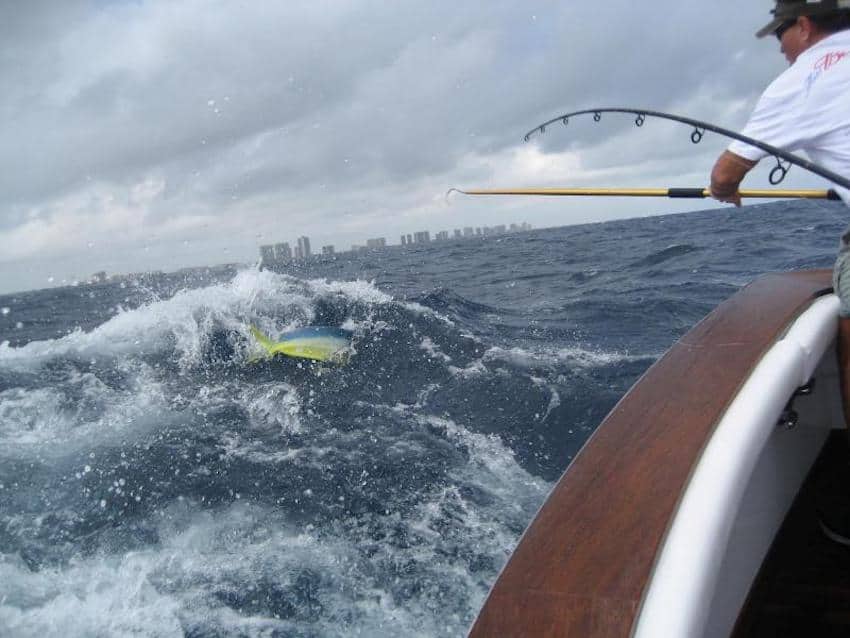
Getting that information is the job of the National Fisheries Institute (Inapesca), the government institute responsible for fishery research, said Esteban García-Peña, fisheries campaign director for the ocean conservation organization Oceana.
“We need the scientific authority, which is Inapesca, to investigate or update the information on dorado to know how things are now,” he said.
Climatological events like hurricanes, El Niño and La Niña have “surely changed the dorado population and stocks” since the last major update in 2004.
Márquez-Farías had a different take. As a former Inapesca researcher, he acknowledged that the agency hasn’t produced the data on fish stocks that is normally required before commercial fishing is allowed, despite having been awarded funding in the past for that specific purpose.
“In theory, you couldn’t open a fishery if the National Fisheries Institute hasn’t recommended it,” Márquez-Farías said.
But Conapesca calls the shots and could give out provisional monitoring permits, he said, allowing some small-scale fisheries to start benefiting from dorado fishing while scientists use the permitted boats’ fishing reports to start planning better species management.
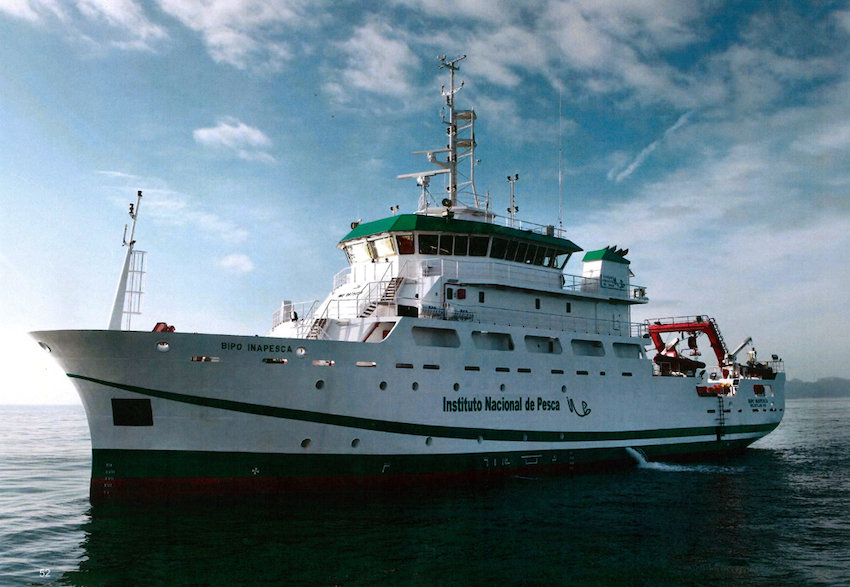
But what if opening up a dorado fishery leads to even more out-of-control fishing? That’s what worries Enrique Fernández, president of the Mexican Foundation for Billfish Conservation, a group that advocates against commercial dorado fishing at the national level.
Fernández said legalizing commercial dorado fishing could reduce population numbers and hurt Mexicans in the sport fishing industry. What is actually needed, he said, is better enforcement of existing rules.
In Baja California Sur, for example, he said there are only eight fishing inspectors for 2,500 kilometers of coastline, far too few to be effective even before taking into account corruption and inefficiency.
There’s one thing the experts interviewed for this article all agreed on: the system meant to protect and manage dorado isn’t working as it should. Black- and gray-market dorado is sold in markets and restaurants and even, according to Fernández, is exported as “white fish.”
Current law makes tracing seafood back to its origin difficult, but consumers can still ask questions about where their seafood comes from, said García-Peña.
Also, sport fishers can ask a charter to see their fishing permits and registration to operate in Mexico, and anglers should thoroughly research the species they hope to fish, García-Peña said. Information on catch limits is available online, and the National Fisheries Chart (Carta Nacional Pesquera) has more detailed information (in Spanish).
As small fishers hide from patrol boats and industrial fishers undercount their bycatch, Mexico’s dorado are soldiering on. Are they thriving? Struggling? Somewhere in the middle?
As long as commercial dorado fishing remains in the shadows, it’s anyone’s guess.
